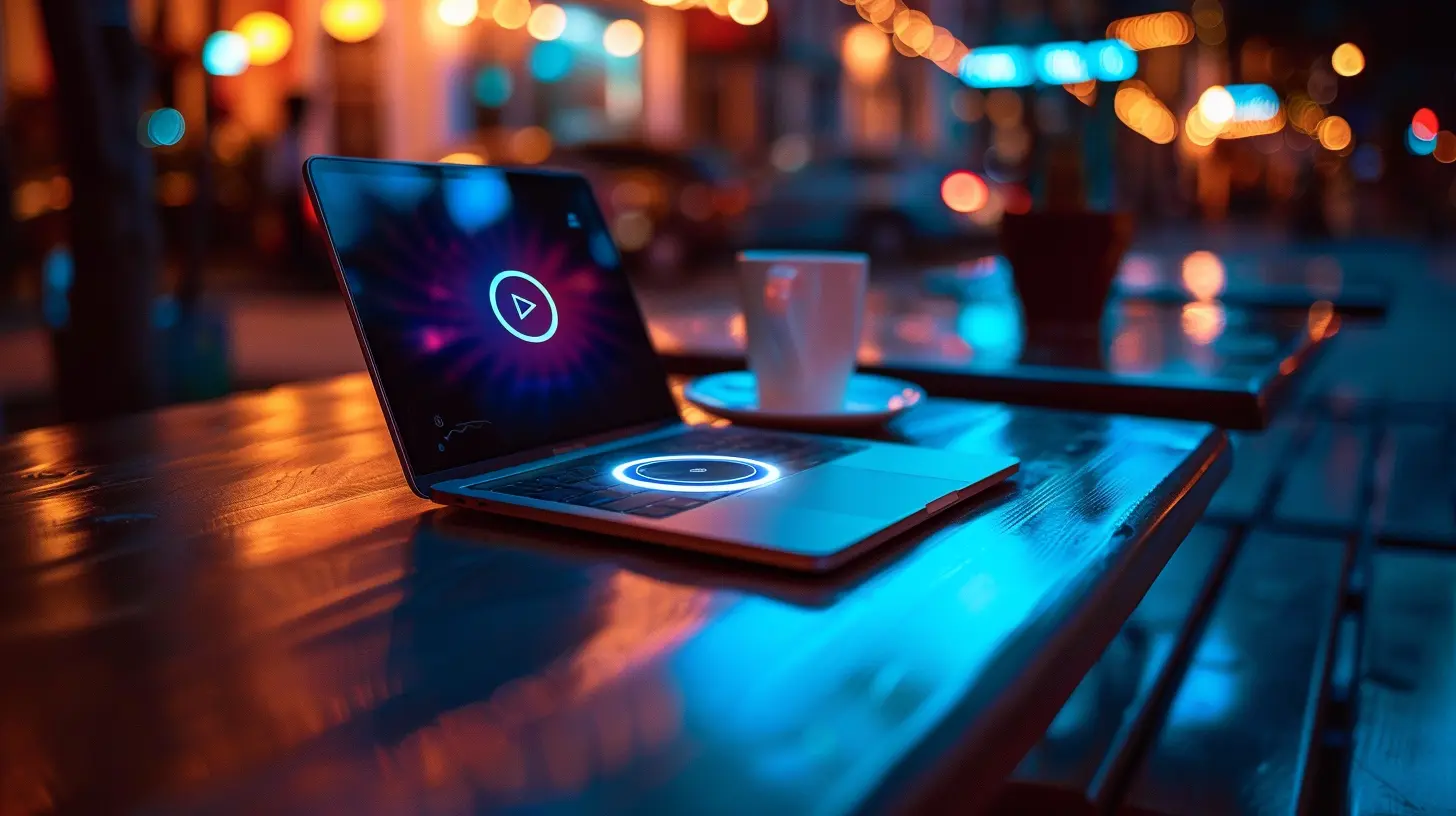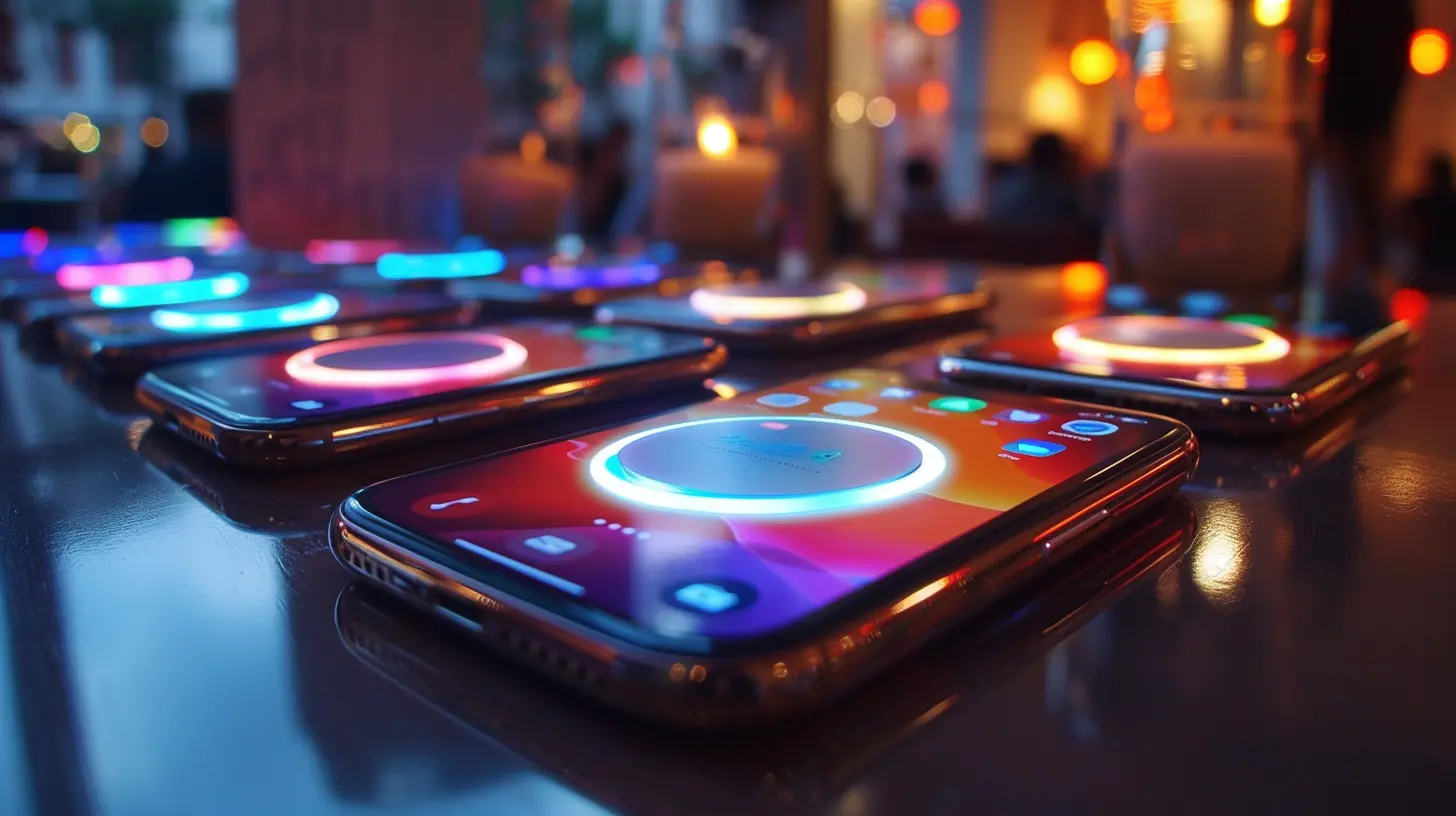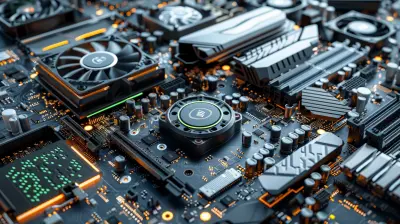Wireless Charging: The New Era of Powering Your Devices
6 November 2025
Ever seen someone casually drop their phone on a charging pad and walk away like it’s no big deal? That, my friend, is wireless charging — and it’s not just a fancy gimmick anymore. It’s becoming the standard. A lot of us are ditching the cables and embracing the convenience of juicing up our gadgets without plugging in a thing. But is it really the future? Or just another tech trend that’ll pass? Let’s dive deep into the world of wireless charging and find out.

What Exactly Is Wireless Charging?
Let’s break it down real quick. Wireless charging — technically known as inductive charging — is a way of transferring power from a source (usually a charging pad or stand) to your device without connecting a physical cable.It works using electromagnetic fields to transfer energy between two objects: the charging pad (transmitter) and your device (receiver). Think of it like a walkie-talkie, but instead of sending your voice, it sends power. Cool, right?
A Simple Analogy
Imagine charging your device is like filling a glass with water. With a wired charger, you’re using a hose (cable) to pour water directly in. With wireless charging, it’s more like putting the glass on a coaster that magically fills it up. No hose, no mess.
A Brief History: Where It All Began
Believe it or not, the concept of wireless power isn’t new. Way back in the 1890s, Nikola Tesla experimented with wireless energy transfer. Fast forward a century, and the world is finally catching up to his ideas.The first forms of consumer wireless charging popped up in electric toothbrushes in the '90s. Yeah, those charging docks weren’t just for show. Then came the smartphones — and everything changed.
Key Milestones
- 2008: The Wireless Power Consortium (WPC) introduced the Qi (pronounced “chee”) standard.- 2012: Nokia launched the Lumia 920, the first mainstream phone with built-in wireless charging.
- 2017: Apple finally jumped in with the iPhone 8 and iPhone X. That was the tipping point.
Now, in 2024, wireless charging is slowly becoming a must-have feature, not just a nice-to-have.

How Wireless Charging Works (Without the Tech Jargon)
Okay, we touched on electromagnetic fields, but let’s keep it simple. Think of wireless charging as a team effort between two key players:- Transmitter Coil (in the charging pad): This coil creates an electromagnetic field when electricity flows through it.
- Receiver Coil (in your device): This coil picks up the energy from the field and converts it back into electricity to charge your battery.
The coils need to be close — usually just a few millimeters apart. That’s why you can’t charge your phone across the room (yet).

Benefits of Wireless Charging: Why It’s a Game Changer
Let’s be honest — cables are annoying. They tangle, break, and somehow disappear into the void (seriously, where do they go?). Wireless charging fixes a lot of that. But it’s not just about tidiness. Here’s why it’s catching on:1. Convenience is King
No more fumbling with cords in the dark. Just drop your device on the pad. Done. It’s especially handy if your hands are full or your charging port is hard to access (we’re looking at you, iPad users).2. Fewer Ports = Better Durability
Using ports less often means less wear and tear. Over time, constantly plugging in and unplugging can damage your device’s charging port. Wireless charging avoids all that.3. Universal Charging (Almost)
The Qi standard is everywhere now — from phones and earbuds to smartwatches and even some laptops. That means one charger can power multiple devices. Your nightstand just got upgraded.4. Safer Charging
Wireless chargers are smart. Many come with features like temperature control, foreign object detection, and auto shut-off. That reduces the risk of overheating or short-circuiting, which can happen with dodgy cables.Downsides? Yeah, There Are a Few
No tech is perfect. Wireless charging has come a long way, but it’s not without its flaws.1. Slower Charging Speeds (For Now)
Wireless chargers generally transfer power slower than wired ones, especially if you’re used to high-speed USB-C or Apple’s MagSafe. While fast wireless charging is improving, it still lags behind wired speeds.2. Placement Matters
If your device isn’t aligned properly with the coil, charging can be inefficient or stop altogether. It’s not a big deal, but it can be frustrating if you're in a hurry.3. Devices Heat Up More
Wireless charging tends to generate more heat. Heat isn’t great for batteries in the long term, although most modern chargers manage it pretty well.4. You Can’t Use Your Phone While Charging (Easily)
Unlike a cable that lets you freely move your phone, wireless charging locks it in place. So if you’re mid-Netflix binge or scrolling TikTok, this might cramp your style.
The Rise of Wireless Charging in Everyday Life
Wireless charging has leapt from just being a smartphone feature. It’s embedding itself in our daily lives in ways you might not even notice.In Cars
A growing number of vehicles now come with wireless charging pads built into the console. Road trips just got a lot smoother — no more tangling with cords while driving.In Public Spaces
Airports, hotels, coffee shops — wireless charging stations are popping up everywhere. You’ll find pads built into desks, tables, and even armrests.In Furniture
Yep, it’s 2024 and we have desks, lamps, and even nightstands with built-in Qi chargers. The future really is now.The Tech Behind the Trend: Different Types of Wireless Charging
Not all wireless charging is created equal. Let’s break down the main types you’ll come across.1. Inductive Charging (Most Common)
Used in smartphones, smartwatches, and earbuds. Requires close contact between the charger and device. Think of this as the "touch to charge" method.2. Resonant Charging
More flexible with distance and alignment. Ideal for charging multiple devices at once. Not super common yet, but it’s growing.3. Radio Frequency (RF) and Over-the-Air Charging
Still mostly experimental, but super exciting. Companies are working on tech that can charge your device across the room using radio waves. Imagine walking into your house and your devices start charging automatically — sci-fi becomes real.
Major Players in the Wireless Charging Game
A lot of big names are pushing wireless charging forward.- Apple: With MagSafe, Apple has redefined wireless charging for iPhones, bringing magnets into the mix for better alignment and faster charging.
- Samsung: Ahead of the curve with fast wireless charging and Wireless PowerShare (charge other devices from your phone).
- Google, Xiaomi, OnePlus: All jumping aboard with their own versions of fast wireless charging.
Accessory makers like Belkin, Anker, and Nomad are also innovating the space with stylish, functional charging pads and stands.
The Future of Wireless Charging
So where's this all heading? Let’s take a peek into the not-so-distant future.1. Longer Range Charging
Imagine placing your phone anywhere on your desk — or even across the room — and it charges magically. Companies like Wi-Charge and Energous are developing tech that makes this possible.2. Wireless Charging for Laptops
We're starting to see this slowly roll out. Qualcomm and Intel are teasing platforms that support high-wattage wireless power, enough to charge laptops and even some home appliances.3. Smart Homes & IoT Devices
Wireless power could be a massive game-changer for smart homes. Charging sensors, cameras, and IoT devices without wires would greatly simplify smart tech setups.4. Eco-Friendly Impact
Fewer cables = less eWaste. Also, wireless chargers generally last longer than cables which fray. That's a subtle but positive environmental impact.
Is It Time to Ditch the Cable?
Short answer? Not completely — not yet.While wireless charging is super convenient and undeniably cool, it still can’t fully replace wired charging when speed and flexibility are top priorities. But for overnight charging, casual top-ups, or reducing cable clutter? It’s absolutely worth trying.
If your phone supports it, you might already find yourself reaching for the pad more than the plug. And that, right there, is the start of the wireless charging revolution.
Final Thoughts
We’re standing at the edge of a power revolution. Wireless charging isn’t some passing tech fad — it’s a full-blown lifestyle upgrade. Sure, it’s not perfect yet. But the convenience, cleanliness, and futuristic vibes it offers are hard to ignore.As technology improves and more devices get on board, you can expect wireless charging to become as common as — if not more than — plugging in. So if you haven't embraced this yet, the real question is: what are you waiting for?
all images in this post were generated using AI tools
Category:
Tech GadgetsAuthor:

Kira Sanders
Discussion
rate this article
1 comments
Tamsin Whitaker
Wireless charging enhances convenience but raises questions about efficiency and long-term battery health.
November 8, 2025 at 1:27 PM

Kira Sanders
Thank you for your insight! While wireless charging offers convenience, it's essential to consider its efficiency and potential impact on battery longevity. Ongoing advancements aim to address these concerns.


